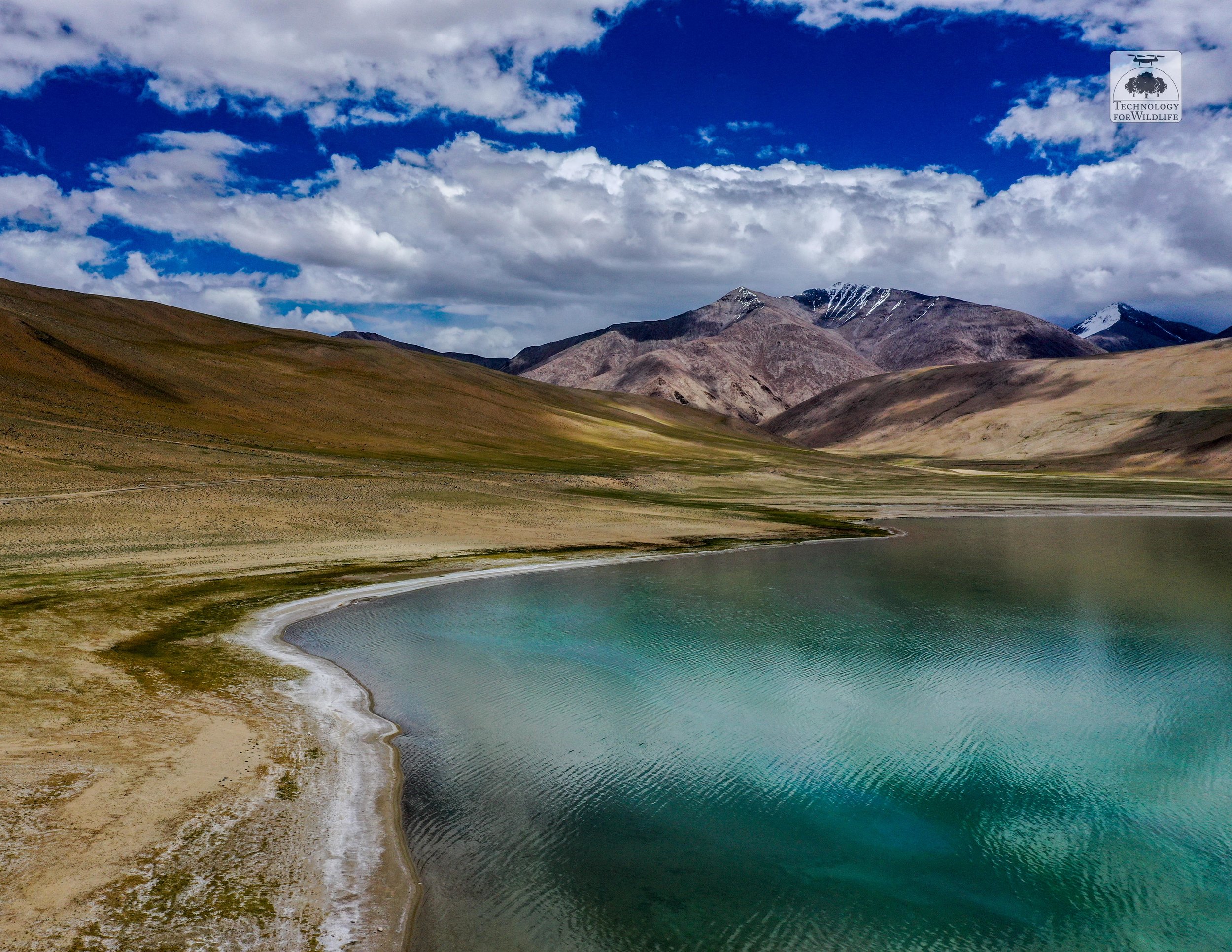Twenty four Mountain Dew bottles and counting. It has now become a game to count the number of freakishly fluorescent fizzy drink bottles we see strewn along the roads in Ladakh. As the car snakes its way towards the most remote of lakes, we continue to find bottle after bottle.
Here in a remote part of the Indo-Tibetan plateau sits Lake Yaye Tso, like a jewel in a crown of Himalayan mountains. The lake is luminous, changing colour from grey-green to turquoise and then back to an other-worldly blue. On the shores of this beautiful isolated lake sits another Mountain Dew bottle, now an integral feature of the landscape.
A discarded Mountain Dew bottle found on the shores of a high-altitude lake in Ladakh. Photo: Gabriella D’Cruz | 2019
The Himalayas have over the years grown in popularity, with tourist towns springing up across the region. Lack of planning and foresight have led to a mounting waste problem that’s getting harder and harder to resolve. Ladakh, with its stark desert landscape and sheer mountains, is now glittering with garbage.
Who do we hold responsible for contaminating even the most remote corners of our planet?
For starters - ourselves. We decided to calculate how much waste four environmentally conscious people generated over a two week expedition in the mountains. My Snicker-bar addiction combined with Nandini’s potato-crisps obsession didn’t help, but we tried to keep our plastic consumption to the bare minimum, carrying our own drinking water bottles and not chewing gum made a difference. At the end of our little Himalayan adventure we had generated a total of sixty individually identifiable pieces of litter.
Keeping track of everything we generated on a daily basis was a distressing process. One butter pack, one biscuit wrapper, two cigarette butts, a packet of Maggi noodles - single use and destined to end up buried underground, dumped in a landfill or blowing across some pristine plateau. I haven’t had to document what I’ve generated before. This was both educative and depressing.
However, our waste footprint was dwarfed by the amount of garbage we found at the nine lakes we surveyed. We began fervently removing all the plastic waste we saw, from large gunny bags to earphones to tiny slivers of plastic wrappers, soon realising that the more human litter we collected the more we found. Plastic disintegrating in the soil, plastic floating in the lakes and sunken plastic at the bottom. After documenting a total of six hundred and ninety eight pieces of litter in varying forms at the nine lakes we visited, from beer cans to flip-flops, and from sanitary napkins to ketchup sachets, we carried it with us to Leh. We added it to the city’s waste cycling stream, in the hope that ultimately, it would be sensibly disposed of.
A majority of the waste generated in remote Himalayan towns remains where it is, clogging up streams, sinking into the soil and contaminating lakes. Pangong Tso, one of the most popular among tourists attracts over six hundred vehicles to its shores every day. The lesser known lakes such as Yaye Tso and Chilling Tso are still relatively pristine; however, with Ladakh’s new status as a Union Territory it is only a matter of time before tourists make their way to these more isolated lakes, with Maggi noodle packets and Mountain Dew bottles in tow.
A marmot bounding away from the camera. Photo: Shashank Srinivasan | 2019
For now Yaye Tso sits beautiful and nearly free of plastic, its waters supporting a fragile marshland full of bar-headed geese and colonies of pikas and marmots. I pick up the rogue Mountain Dew bottle as we leave for Leh. A spot of paradise, plastic free for a day.
The author photographing a Mountain Dew bottle before removing it from the lake shore. Photo: Nandini Mehrotra | 2019







